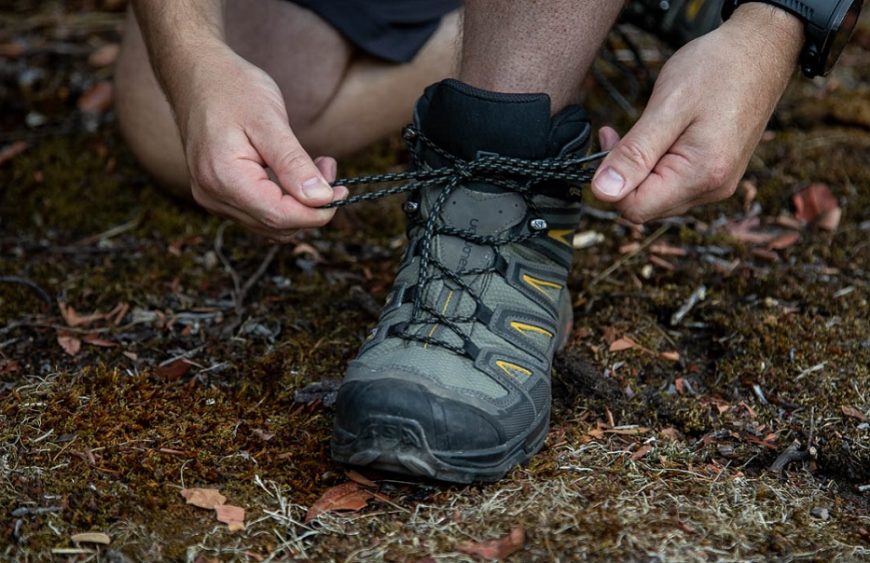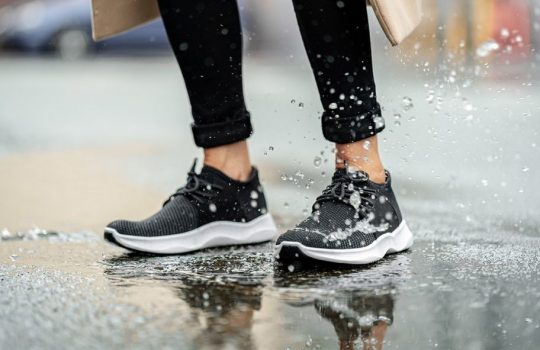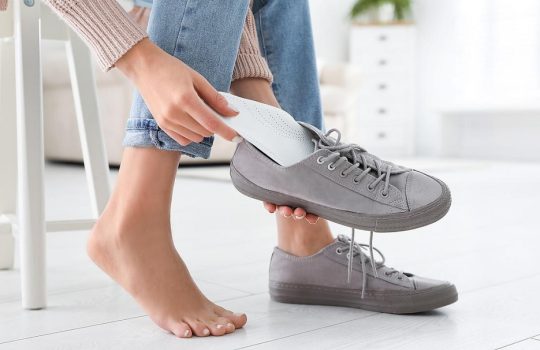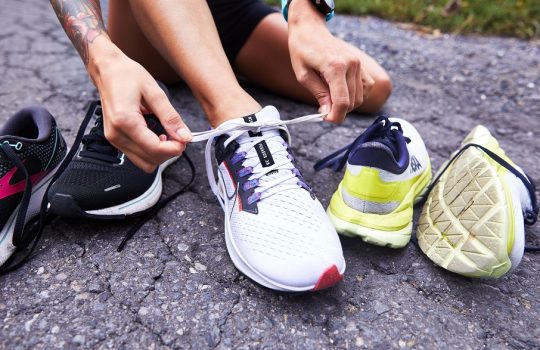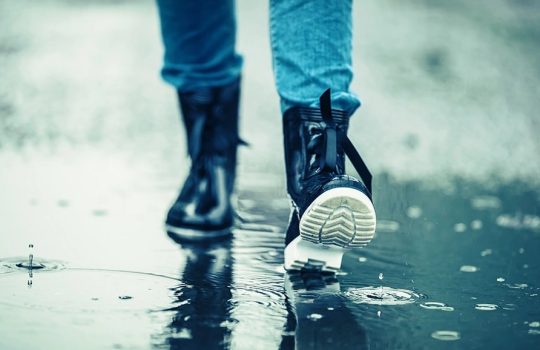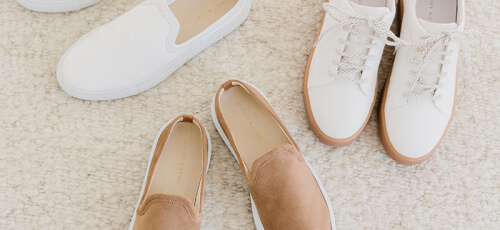If you love to get outdoors and you spend a lot of time on trails, you need to know how to choose a hiking boot. Sneakers are not going to cut it once you’re off the paved path.
What is the difference between a walking shoe and a hiking boot? You might think that a walking shoe would be suitable for hiking. It might if the terrain isn’t too rugged. But if you compare hiking boots vs. shoes, you’ll see that a hiking boot is superior for going off-road. It provides stability, traction, and support that you usually won’t find in a running shoe or a walking shoe. However, if boots aren’t your thing, there are hiking shoes without the tall uppers. They offer similar features without the extra ankle support.
How to tell if you need new hiking boots
The rule of thumb is that boots last about 350 to 500 miles. But instead of worrying about the mileage, look at the soles.
How worn are they? Does the edge of the heel curl up when it’s on a flat surface? How comfortable are the boots?
You might get away with putting in a new insole to make them feel more supportive. A shoe repair shop might be able to re-sole the exterior, too. But boots wear out eventually.
What are some features of a good hiking boot?
The first thing we look at is the outsole of a hiking boot. It should be durable with grippy tread to handle a variety of surfaces from grass and mud to gravel and rock.
Next, we examine the upper. Hiking boots for summertime often have synthetic mesh uppers with good ventilation. But boots for rainy and cold weather tend to have Gore-Tex or Thinsulate linings to keep feet dry and warm.
Then, we consider the insoles and midsoles. Do they have adequate cushioning and arch support for miles on uneven terrain? Can they be replaced with custom orthotics?
It’s also important to think about the height of the upper. Tall boots are helpful if you have ankle problems or will be carrying a backpack.
How to choose a hiking boot
It’s easy to get distracted by brands, prices, and styles. But the first question to ask yourself is what type of hiking will you be doing?
- Where will you be going? Will you be on easy trails or unmarked, technical terrain?
- What seasons will you be outdoors?
- How heavy is your gear?
- How far are you going?
- Are you willing to put in the effort to maintain the boots?
If you’re a day hiker on marked trails, you’ll appreciate a lightweight, flexible hiking boot or trail running shoe. And if you’ll be on difficult terrain with a backpack, you’ll want a reinforced, taller boot with a thicker outsole.
Waterproof boots with an impermeable membrane like Gore-Tex are stifling in the summer but fantastic for wet weather during the other three seasons.
Let’s talk about the features of the best hiking boots.
Hiking boot outsoles
Check the tread. A hard outsole is common on mountaineering and backpacking boots but it may feel slick on some surfaces.
Meanwhile, a more flexible sole is comfortable for trail running but should still have a good lug pattern for traction.
If you’ll be on steep descents, look at the heel brake to make sure it’s adequate.
Hiking boot midsoles
The midsole is invisible but essential. Not only does it cushion impact, but it also provides support and stability. Polyurethane midsoles are durable but firm for carrying heavy loads. EVA midsoles with more cushioning are similar to what running shoes have.
The description of the boot may mention shanks, a stiffening insert that may cover all or only part of the midsole. Some hiking boots have plates to keep rugged terrain from bruising the feet.
Hiking boot uppers
The traditional hiking boot has a leather upper. It may be full-grain, nubuck, or split-grain. The first provides good water resistance and support if you’ll be going a long way with a heavy load. The second is also water and abrasion-resistant but more flexible than full-grain leather. The third is less expensive and often blended with synthetic materials. It’s used to provide water and abrasion resistance, but it’s not as durable as the other two forms of leather.
Synthetic uppers or vegan uppers usually consist of nylon or polyester. They are lightweight and breathable although often combined with waterproof membranes like Gore-Tex.
If you’ll be hiking in inclement weather, get insulated boots or waterproof boots. Just realize that they keep water out so your feet may be sweatier. Plan accordingly with appropriate socks (we recommend wool).
Should your hiking boots be a size bigger?
When it comes to hiking shoes, should you size up or down? How should hiking boots fit?
Here’s how to choose your hiking boots size.
Start by measuring your feet in the afternoon. That’s when they’ve had a chance to swell. This is a good way to avoid buying boots that are too small.
Better yet, let a professional at a shoe store measure your feet in the afternoon. But if you’ll be shopping online, you can easily measure your feet at home. You’ll need a measuring tape or ruler.
Wearing the socks that you’ll be using with your boots, stand on the tape. Now you know the length of your foot.
If you have wide feet, stand on the tape again and measure the width.
Why should you go to the effort of measuring your feet when you already know your shoe size? It’s because manufacturers upgrade designs and sizes between different brands aren’t consistent.
Once the boots arrive, put the hiking socks on, lace up the boots, and walk around your house. If possible, walk down a ramp so that you can see if your toes jam into the front. You should have a thumb’s width space between your longest toe and the front to the boot. Moreover, your heel should not slip up and down. Leather boots will take longer to break in and may feel stiff at first.
Get inspired by the best hiking boots below.
Salomon X Ultra 4 Mid Gore-tex Hiking Boots
[su_amz2 asin1=”B08LKNVTPZ” asin2=”B09QCRMJ6D.LZZZZZZZ.jpg” alt=”buy from amazon”/>
Salomon hiking boots are often considered the best hiking boots for men and women. The brand has a solid reputation as it’s trusted by outdoor pros around the world.
The Salomon X Ultra 4 has been chosen repeatedly by outdoor enthusiast sites as the best all-around hiking boot this year. It’s comfortable, lightweight, and flexible. Plus, it comes in wide sizes and protects against ankle rolls.
This model is an updated version that weighs even less than the earlier version. You could use it for trail running – it’s just that comfortable. It incorporates outstanding traction, stability, and toe protection for lightweight backpackers and day hikers.
What’s more, it features a Gore-Tex waterproof liner that lets you wade through creeks. The liner makes it a little warm for summer, however. (Check out the non-waterproof X Ultra 4 Mid Aero for dry weather and high temperatures).
Check out the outsole with Salomon’s patented Contagrip tread with chevron-style lugs that maintain traction on muddy trails. It won’t wear down for many, many miles.
Pros:
- Recommended by outdoor enthusiasts and professionals around the world
- Perfect for day hikes and lightweight backpackers
- Waterproof Gore-Tex liner
- Contagrip outsole for superior traction and durability
- Available in wide sizes
Cons:
- Not made for carrying a heavy backpack
- Not well-ventilated for high temperatures
Merrell Moab 2 Mid Waterproof Hiking Boot
[su_amz2 asin1=”B01HFKL0KG” asin2=”B01HFL883C.LZZZZZZZ.jpg” alt=”buy from amazon”/>
Merrell makes some of the best hiking shoes for beginners, especially if you’re on a budget. Although these hiking boots are slightly heavier than the Salomon ones above, they are waterproof (not Gore-Tex) and have Vibram outsoles. Vibram is known for exceptional traction and durability.
If you’re mostly on maintained trails, these boots are comfortable and supportive. They have good cushioning including arch support. Also take a look at the updated model, Moab 3, made with recycled materials.
Even with all the benefits, these boots are not made for rough terrain or when you have a heavy backpack.
Pros:
- Ideal for beginning hikers on a budget
- Vibram outsole
- Waterproof liner
- Good arch support and cushioning
- Suitable for maintained trails and day hikes
Cons:
- Not ideal for heavy backpacks or rough terrain
- Last year’s model
Lowa Unisex Adults’ Renegade GTX Mid Low Rise Hiking Boots

Taller, waterproof, and supportive, these Lowa boots weigh only around two and a half pounds per pair. Even so, they are sturdy enough for carrying heavy packs and navigating rocky trails.
The secret is in the polyurethane frame that keeps weight down but stabilizes the footwear so it behaves like a backpacking boot. It doesn’t take long to break in the boots, either.
The only downside is that if you put a lot of miles on them, you’ll probably want a new pair next year. On the bright side, you can get them in regular, narrow, and wide widths.
Pros:
- Tall, supportive hiking boots for backpacking and rocky terrain
- Waterproof liner
- Very lightweight with a polyurethane frame and thin, soft leather
- Rapid break-in time
- Available in regular, narrow, and wide sizes
Cons:
- Not as durable as some models because of the trade-off to make them lightweight
Hoka Anacapa Mid GTX Hiking Boot
[su_amz2 asin1=”B093ZSYWRM” asin2=”B093ZRF3M7.LZZZZZZZ.jpg” alt=”buy from amazon”/>
If you want lots of cushioning, the best hiking boots for women and men are made by Hoka. There’s a reason why they resemble running shoes. They are super lightweight at only 2 pounds per pair. Plus, they offer an incredibly smooth ride. Did we mention that they are waterproof with a Gore-Tex liner?
They have an energy-return midsole and a rocker sole that makes us want to keep going. Everything feels plush and springy. The boots themselves are quite colorful and fashionable. We even like the lacing system that provides good ankle support.
If there’s any con, it’s the durability at this price point. Although the boots have a Vibram outsole, it’s intermingled with “blown rubber” that feels softer and isn’t as durable.
Pros:
- Ultra-cushioned and lightweight hiking boots suitable for trail running
- Rocker sole with energy-return midsole for extra spring
- Supportive lacing system for the ankles
Cons:
- Outsole isn’t as durable as some options
adidas Free Hiker Primeblue Hiking Shoes

Not boots, but shoes – this is fusion footwear for hiking. Go ahead and run up that mountain. These durable hiking shoes have a torsion bar for stability. It’s flexible yet supportive in combination with the springy midsole. You might love them so much they replace your everyday shoes.
Pros:
- Hiking shoes for day hikes
- Good stability and flexibility with a springy midsole
Cons:
- Not for carrying heavy backpacks or technical climbing
Columbia Women’s Redmond III Mid Waterproof Hiking Shoe

No, it’s not Gore-Tex, but it’s still waterproof. The Omni-Tech membrane is a bootie with sealed seams to keep out water. Underneath is the Techlite midsole that cushions impacts and returns energy with every step.
If you’re not certain what kind of terrain you’ll be facing, these are good boots to have. Not only are they comfortable, but they are durable. They have reinforced heels and toes as well as metal eyelets for the laces. The tongue is gusseted so that debris doesn’t slip inside.
Meanwhile, the Omni-Grip outsole can handle scree and mud without leaving black marks on linoleum. One reviewer hiked waterfalls in Iceland and had a great time with dry feet.
Lastly, the boots are available in wide widths and various colors.
Pros:
- Omni-Grip outsole handles all sorts of terrain without marking floors
- Waterproof bootie and gusseted tongue keep out debris and water
- Energy-return midsole for comfortable cushioning
- Reinforced toes and heels
- Metal eyelets for the laces
- Available in various colors and wide widths
Cons:
- A bit warm in hot weather
Conclusion
We hope our tips on how to choose a hiking boot help you find what you need today. Drop us any questions below.

